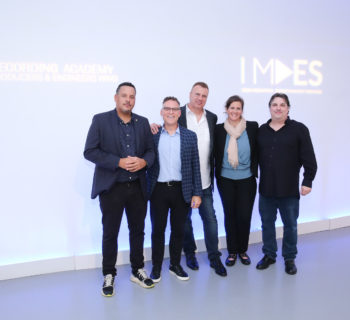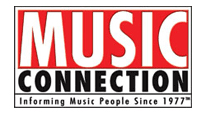Iron Mountain has been in the information management services business since 1951. About a decade ago the company consolidated its entertainment offerings under Iron Mountain Entertainment Services (IMES) and expanded not only into audio archiving but also into an entire range of offsite storage for irreplaceable artifacts such as costumes, film and related rarities. Lance Podell, Senior Vice President and General Manager of IMES, has a background in advertising and entertainment and he built and ran YouTube Spaces, YouTube’s global studio system. He now oversees IMES’ daily operations.
“Our archives are very active,” he observes. “Clients are in and out of them all the time, whether it’s simply to update to newer formats, pull historical footage out for a documentary or to create a new immersive mix. Many of our clients are broadcasters, so anytime there’s a news cycle our archives get busy on that topic. They go to their archives regularly to retrieve, preserve and re-purpose for new formats such as streaming.
“Both analog and digital content starts to expire over time,” Podell continues. “Our clients are not only aware of this, but are also very focused on mitigating the risk that comes naturally with time and that will inevitably impact their music catalog.”
Receiving media that is damaged or degraded is de rigueur for archiving services. Fortunately, IMES has assembled a team of audio experts, many of whom have a formal background in music and/or engineering. “We have acclaimed engineers who have invented tools and processes to remediate when needed to bring files up to the most current digital format,” Podell says. “Once they’ve done that, they want to digitize. Another set of clients come in with their full archive and it becomes our responsibility to help service and maintain it. Sometimes that requires remediation, sometimes files simply need to be brought up to the most current format. For instance, an eight-track is obsolete because there aren’t many players for it anymore. Once an archive is with us, it’s with us. Clients don’t need to take it out of the facility for anything. Once an asset is housed, we always maintain it to the newest version. We have people who’ve graduated from Berklee College of Music, for example. Some have been studio producers and one is even an Oscar winner. Our team is built of true experts from the music industry and our pedigree is impeccable. It’s a key part of our secret sauce.”
As with all physical media, the countdown to self-destruction begins the moment it’s first used. “Audio tape has a shelf-life of 26 or 27 years,” Podell asserts. “After that, it begins to deteriorate. You’ve got to update it to the newer digital version 24 years in, not 28 when it’s too late. If you’re a record label and you have all of your music stored with us, part of what we offer is our experience and advice as to what in your archives requires the most immediate attention and how to prioritize these assets for digitization over time.”
Clients are empowered to comb through their archives on demand with IMES’ proprietary digital archive platform. “Picture it like Google search,” Podell suggests. “Once you’ve entered all of the assets into our repository and tag it with critical metadata, you can search and retrieve everything in your digital archive right from your desktop or laptop.”
One of an artist's greatest fears is that their entire catalog could be compromised due to a physical breakdown. Helping them to reclaim something feared lost is a chief source of satisfaction and pride for Podell. “A major artist came to us once and said that their entire collection had been in public storage,” he recollects. “There was no climate control, the tapes had been attacked by the elements and the original recordings were all but ruined. Thankfully our experts were able to restore them all to their pristine original status. It felt great to be a part of that. We worry all of the time about the potential clients who don’t think about this and are archiving instruments, music and other assets in public storage or in their attic or basement. These are not sustainable solutions if you truly care about preserving them for history, culture or your family.”
Iron Mountain has storage sites spaced across the world. Notable among them is “The Underground,” a large lime mine 220 feet below ground, which boasts 1.8 million square feet of archive space. Located about 60 miles north of Pittsburgh, PA, anything stockpiled there is likely to survive the worst that mankind or the heavens can conspire to send its way.














